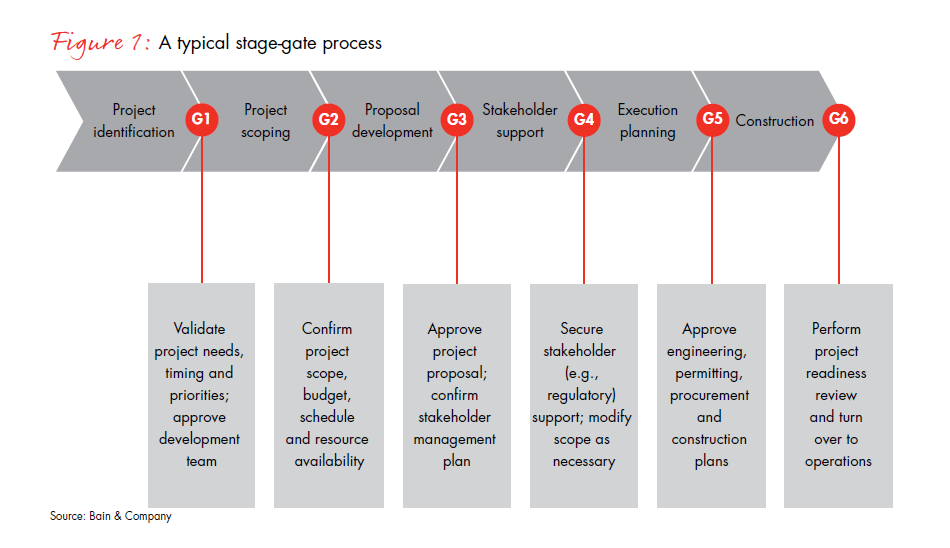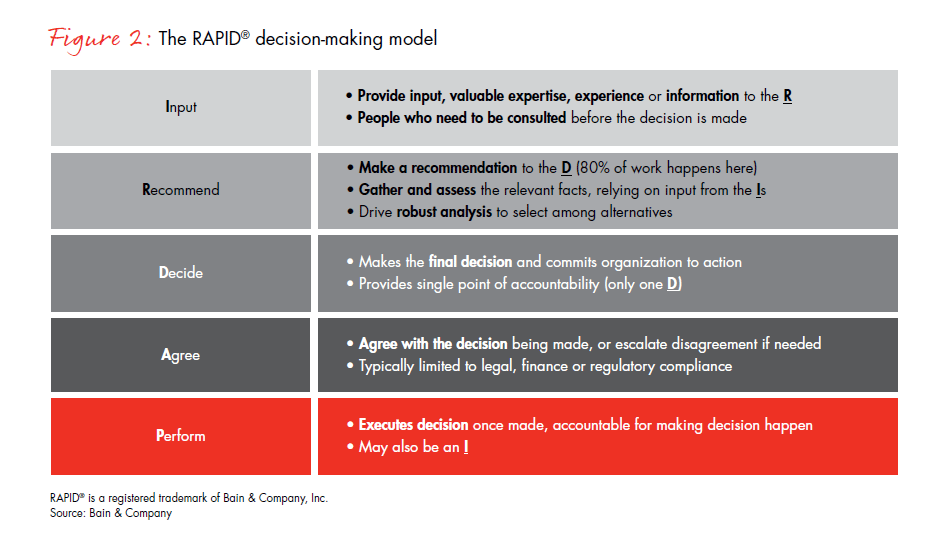Brief
Utilities in Europe and North America face the largest demand for new construction of electric generation and transmission facilities in more than a generation. They’ll need to relearn how to manage these projects and make the most of their resources to deliver.
Investments in electric utility infrastructure are at an all-time high in North America and Europe. These investments aim not only to replace and upgrade aging infrastructure, but also to meet new requirements to deliver more electricity from renewable energy sources like solar and wind. California, for example, will require 33% of its electricity to come from renewables by 2020; Germany aims for at least 35% by the same year.
Sources of renewable generation are often far from load centers, creating the need for new transmission infrastructure. Two examples of the most complex projects in the US are the $5 billion Competitive Renewable Energy Zones (CREZ), a group of transmission upgrade projects to significantly increase wind generation in Texas, and Sunrise Powerlink, a 117- mile transmission line bringing renewable energy from the Imperial Valley to San Diego (costing about $1.9 billion). In Europe, the list of power generation and transmission projects planned or underway is also growing. Companies in EU countries have committed to raising offshore wind capacity (mostly in the North Sea) from the current load of about 3 gigawatts to approximately 40 gigawatts by 2020. That has generated a pipeline of about 150 major projects, each worth an average of approximately 750 million euros, depending on project size. Many of these projects are being managed by large utilities, such as Dong Energy, RWE, Vattenfall, E.ON and Centrica.
Taken together, utility sector investment levels are expected to more than double in Europe, from the relatively steady levels of approximately 35 billion euros annually in the early 2000s to projected peaks of around 85 billion euros each year in the middle of this decade. Utilities in the US see a similar trend in which investment levels that were relatively steady in the early 2000s are projected to grow rapidly throughout the decade.
This dramatic increase in activity comes with unique challenges that utilities must confront in order to succeed:
- Capability gap. Nearly a half century has passed since the last construction boom in electrical grid infrastructure, and in that time, the organizational and operational expertise for accomplishing such major projects has languished. While some level of power generation and transmission construction has been ongoing, utility companies are generally dusting off an outdated and incomplete playbook. Some may choose to outsource the construction and project management efforts, but many will choose to rebuild the capabilities in-house. While major projects vary significantly (from offshore wind to transmission interconnections), managing them from inception to completion is a companywide exercise. Project teams go well beyond engineering, procurement and construction experts. Given today’s complex environmental and regulatory environment, as well as intense public scrutiny, departments like public affairs, regulatory affairs and environmental compliance play critical roles on project teams.
- Talent shortage. A further complication on the capability front is the workforce, which is both aging and inexperienced. Few engineers remain from the last construction boom, and those who are still working may not be as familiar with cutting-edge engineering technologies and productivity tools. Younger engineers flowing into the industry to support the boom may be technologically savvy, but they tend to lack experience designing and building major projects and are unfamiliar with the industry’s complex regulatory environment.
- Complex set of external stakeholders. Before a shovel ever touches dirt, utilities must secure a daunting set of licenses and permits from public and private authorities. They must also coordinate with a range of other constituencies with a stake in the project (ratepayers, special interest groups, residents) who have differing, and sometimes competing, goals (low costs, clean energy, environmental protection, home values). Utilities face the classic conundrum of “hurry up and wait,” driven by the conflicting demand to rapidly bring new, cleaner power online while taking the time necessary for environmental impacts to be studied and mitigated. In many cases, the planning period is longer than the actual construction time; three to five years of planning for an 18-month construction project is not uncommon.
Successfully managing through these challenges is an exercise requiring muscles not ordinarily flexed by utilities with siloed organizations. In our work with utility companies in Europe and North America, we have had the chance to observe and guide management teams and leaders on a wide variety of capital investment projects. The best way to efficiently deliver major projects is to build processes and approaches that ensure scarce resources are focused on the most critical projects, specify decision-making protocols, clearly articulate project progression from stage to stage and delineate team member roles—core project management skills.
Get these things right
Making efficient use of scarce and often inexperienced company resources takes focus and discipline, especially given the rapid pace required to meet the high expectations of customers and regulators. In our experience, applying the following disciplines across the full project lifecycle can make the difference between success and failure.
- Make the right project commitments. Before any work begins, the first critical step is to identify and prioritize the projects that the utility will take on. Understanding the needs (population growth, rising demand, need to improve reliability), alternatives, scope, costs and risks are all crucial if utilities are to avoid starts and stops. With project teams kicking off five years or more prior to a new line being energized and project needs often spurred by independent generators that may no longer be solvent when the work is done, determining which commitments to make is not a straightforward exercise. But that inherent challenge does not lessen the pain of halting or significantly changing projects after they have begun, that is, after an investment of time, money and resources. Such halts can send a bad message to regulators and ratepayers, suggesting the utility does not have a clear vision of the project and is not making the most efficient use of ratepayer funds.
- Delineate the stage-gate process. Efficient organizations manage smooth transitions from one stage to the next by clearly defining milestones and evaluating each project against consistent criteria, including a reevaluation of the demand that the project aims to meet. Project managers need a clear understanding of the inputs (technical analysis, stakeholder input, regulatory approval) required to satisfy the requirements of each milestone before moving on to the next stage (see Figure 1). And, of course, project managers need realistic measurements of project progress, allowing for an accurate set of forward-looking schedule and cost projections.

Unfortunately, these massive projects rarely follow the classic model whereby the cost is established in the early design phases. For example, years into a project, its scope may expand significantly, as regulators and resource agencies demand route changes or additional environmental mitigations. Rigorous scope and cost management, reviewed at each gate, are necessary, but they’re not enough. They must be paired with frequent stakeholder education to maintain support and avoid surprises.
- Determine how decisions will be made. Projects can only move efficiently from one stage to the next when departments have worked out ahead of time who will be responsible for decisions and how companywide input will be taken under advisement. A decision-making tool, such as Bain’s RAPID® model (recommend, agree, perform, input, decide), can help create a uniform process that provides guidance to decision makers throughout the project (see Figure 2).

At one utility company, there was a history of slow and contentious decision making, as departments lacked clear guidelines over who had decision rights. To break that pattern, the utility worked through a challenging evaluation in which representatives from each department clearly articulated what decisions were actually needed and what each department’s role was in those decisions. By applying the RAPID model, managers were able to ensure that the right departments had “the D” for the right decisions, while others felt comfortable knowing their voice was heard. The effort produced a decision playbook the company now uses as a reference for major projects. It defines a clear procedure to help remove emotions from important decisions.
- Describe the scope of each department’s work. Successful teams also take the time to clearly describe the expectations of each department. Team members need to agree on the level of detail and depth—especially if other departments are relying on that input to inform their own efforts. For example, if one department has provided only desktop analysis while another is out in the field staking structure locations, the discrepancy in detail is bound to create misalignment and, unfortunately, rework. Managers cannot develop a cohesive view of the project, with confidence in the assessment of costs and risk, when components are of unequal fidelity.
As utilities confront the largest wave of infrastructure investments in a generation, they must enhance their project management capabilities in order to make efficient use of internal and external resources, all while maintaining a positive reputation with regulators and customers. Through our experiences advising utility clients, we have seen that clarifying project selection criteria, specifying decision-making protocol, detailing step-by-step project requirements and outlining team member roles will dramatically improve project team efficiency and help companies move projects more quickly through the pipeline.

